Hiking a social trail behind Joshua Tree National Park’s famed Cap Rock, I came across a peculiar sight that, if you know what you’re looking for, actually isn’t so unusual at all: a crude cross made of dark stones below a scribble of orange graffiti.
It was a makeshift memorial to Gram Parsons, the 1970s rock star who had a deep connection to the park in life — and in death. So much so that fans, nicknamed “Grampires” by some park staff, still haunt this dusty patch of Mojave Desert decades after the 26-year-old’s death at a nearby motel — and impromptu funeral pyre on park grounds.
Parsons’ fans often leave guitar picks, handwritten letters, empty whiskey bottles and, at least one time, a life-size papier-mâché statue of the singer. Unfortunately, some also spray-paint the rocks, which is more difficult to clear away. “Gram loved the park so much,” said George Land, a former public information officer for the national park. “I can’t imagine he’d be happy about someone desecrating it like that.”
Park officials have long debated how to acknowledge Parsons’ story. For decades, it was seen as an embarrassment to be ignored, but that stance has softened over time. Upon the 50th anniversary of Parsons’ death on Sept. 19, 1973, both park officials and the surrounding town are bracing for an influx of fans. Park officials also are busy imagining a new way to honor Parsons and Joshua Tree’s far-reaching musical roots.
Return of the Grievous Angel
Parsons was considered to be the father of the country-rock movement — he called it “cosmic American music.” He was a member of the Byrds for four tumultuous months and then co-founded the Flying Burrito Brothers with fellow Byrd Chris Hillman before embarking on an all-too-brief solo career.
“With his voice and good looks, Gram could stand onstage and make all the girls cry,” said Land. “His songs could tug at your emotional heartstrings.”
Parsons was pals with the Rolling Stones, introducing the band to both Joshua Tree and the music of country king George Jones. (Depending on whom you speak to, Parsons either inspired or actually wrote the Stones’ classic “Wild Horses.”) The First Aid Kit song “Emmylou” was inspired by Parsons and duet partner Emmylou Harris; the song’s lush music video was filmed in Joshua Tree.
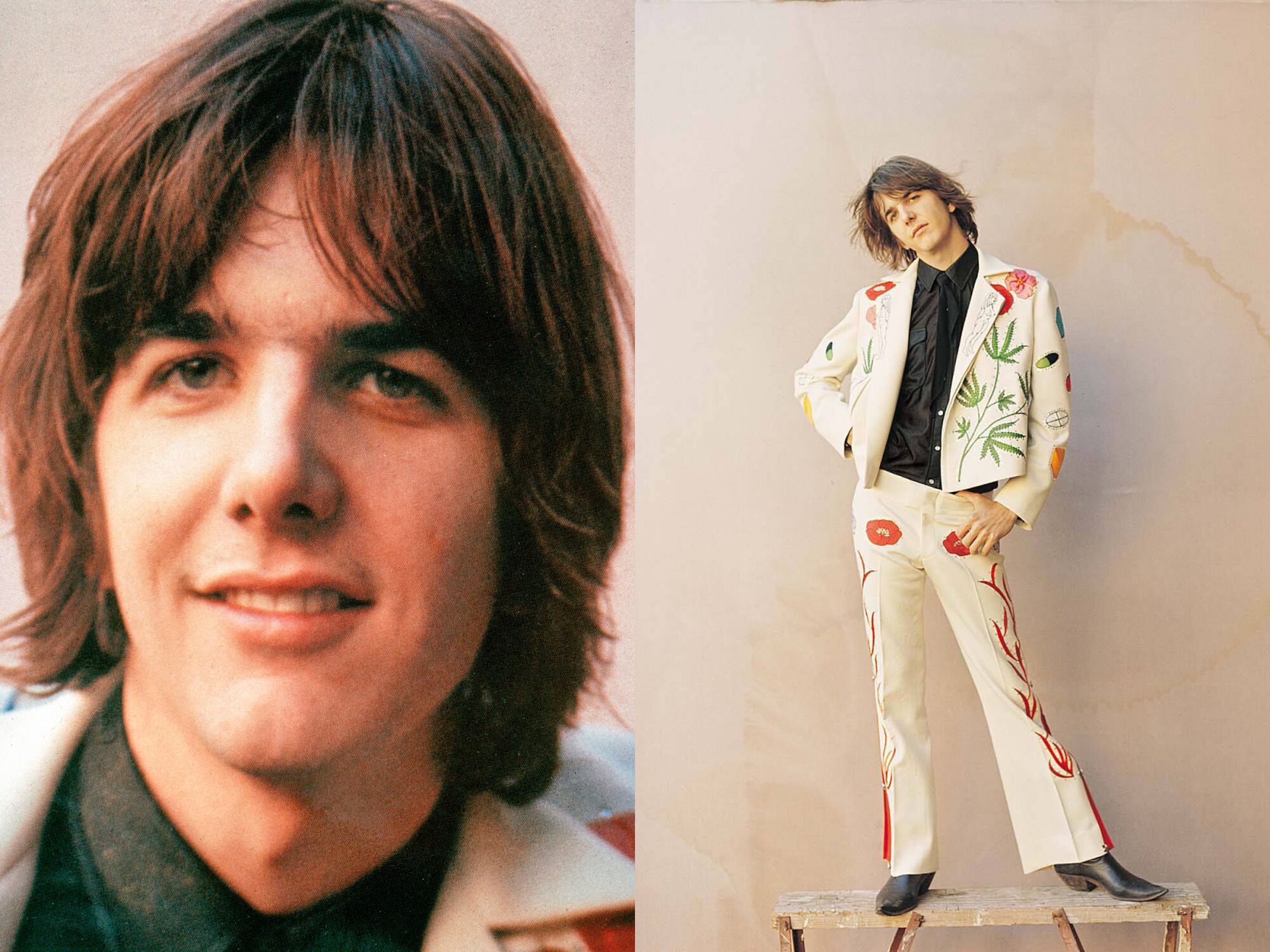
Portraits of Gram Parsons during his music career.
(GAB Archive; Jim McCrary / Redferns)

Artwork about rock star Gram Parsons decorates the main lobby at Joshua Tree Inn. The musician died at the hotel in the 1970s, and it has become a popular place for fans to connect with him.
(Dania Maxwell / Los Angeles Times)
Joshua Tree has long held an allure for visitors, including famous musicians. Queens of the Stone Age vocalist Josh Homme was born near here, while ’60s rocker Donovan loved the area so much that he moved here in the 1970s. John Lennon visited, as did the Doors’ Jim Morrison. The Eagles’ first album cover was shot in the park. (Ironically, the cover of U2’s classic “The Joshua Tree” album was shot hundreds of miles away, closer to Death Valley National Park.)
“The rock scene of the 1960s and ’70s especially seemed to intertwine with Joshua Tree,” said park ranger Jeffrey Tedtaotao, himself a drummer. “It’s easy to get inspired out here, to draw on the stillness and quiet, the trees and the rocks.”
Parsons loved visiting Joshua Tree while he built his career in Los Angeles. At the time, it was a national monument (it became a national park in 1994), and a fairly sleepy one at that.
Everywhere I go in the park, I can’t help but imagine Parsons snoozing atop a boulder or leaning against one of the strange, spindly yuccas that give the park its name, scribbling lyrics in his notebook.
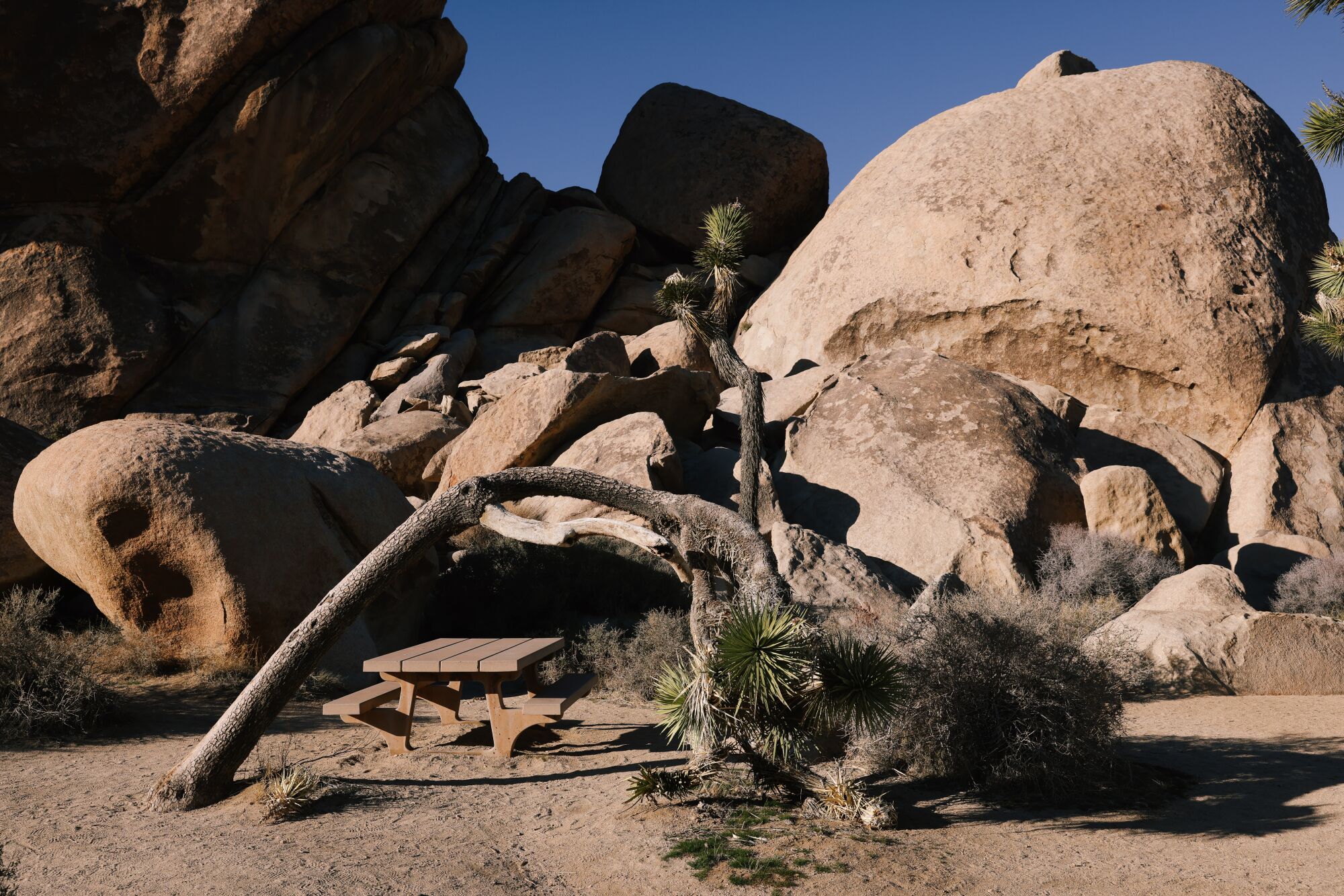
Fans of rock star Gram Parsons have consistently visited Cap Rock at Joshua Tree.
(Dania Maxwell / Los Angeles Times)
Love Hurts
In September 1973, needing to blow off steam after recording his second solo album, “Grievous Angel,” Parsons, his girlfriend and two others made a beeline for Joshua Tree. After day-drinking at a bar in town, Parsons and his party retired to the Joshua Tree Inn, a small, Spanish-style motel where he was a welcome regular and friend of the owners and staff.
“Donovan told us years later that all the musicians that would stay here when visiting Joshua Tree, they’d all hang out outside their rooms or by the pool and just play,” said Dee Dee Cornett, the inn’s current general manager.
In rock circles of the time, Parsons was almost as well known for his drug consumption as his music. He was notorious for cocaine binges that led to missed concerts and fractured relationships, Ben Fong-Torres writes in his biography of the musician, “Hickory Wind.” (Keith Richards even suggested he was going too hard.)
While partying with his friends that night at the motel, it’s believed that Parsons overdosed on a combination of alcohol and morphine. After he was briefly resuscitated, he was brought to his room — No. 8 — where his breathing would once again slow, then stop forever.
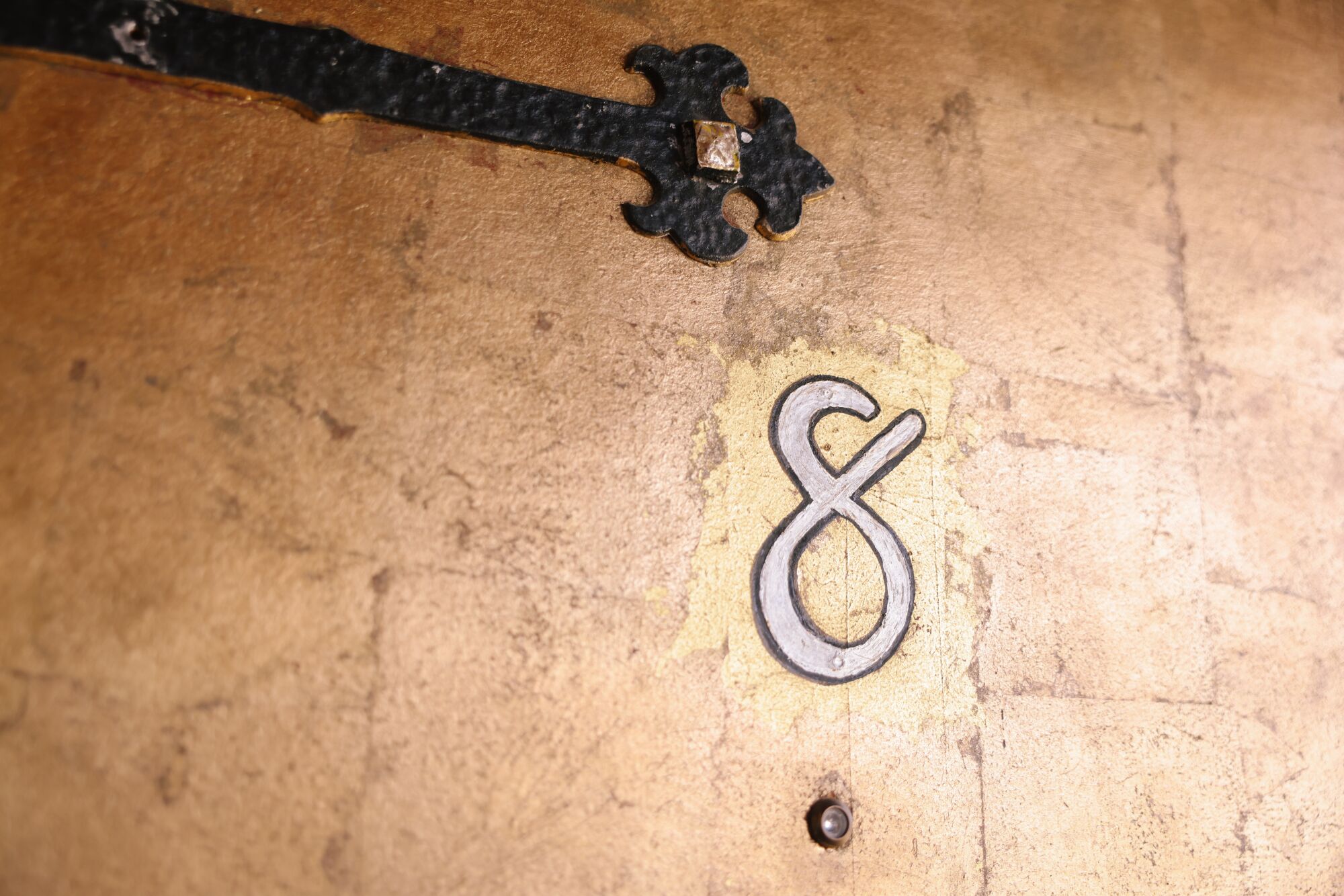
The original door and seat for Room 8 decorate the outside corridor at Joshua Tree Inn.
(Dania Maxwell / Los Angeles Times)
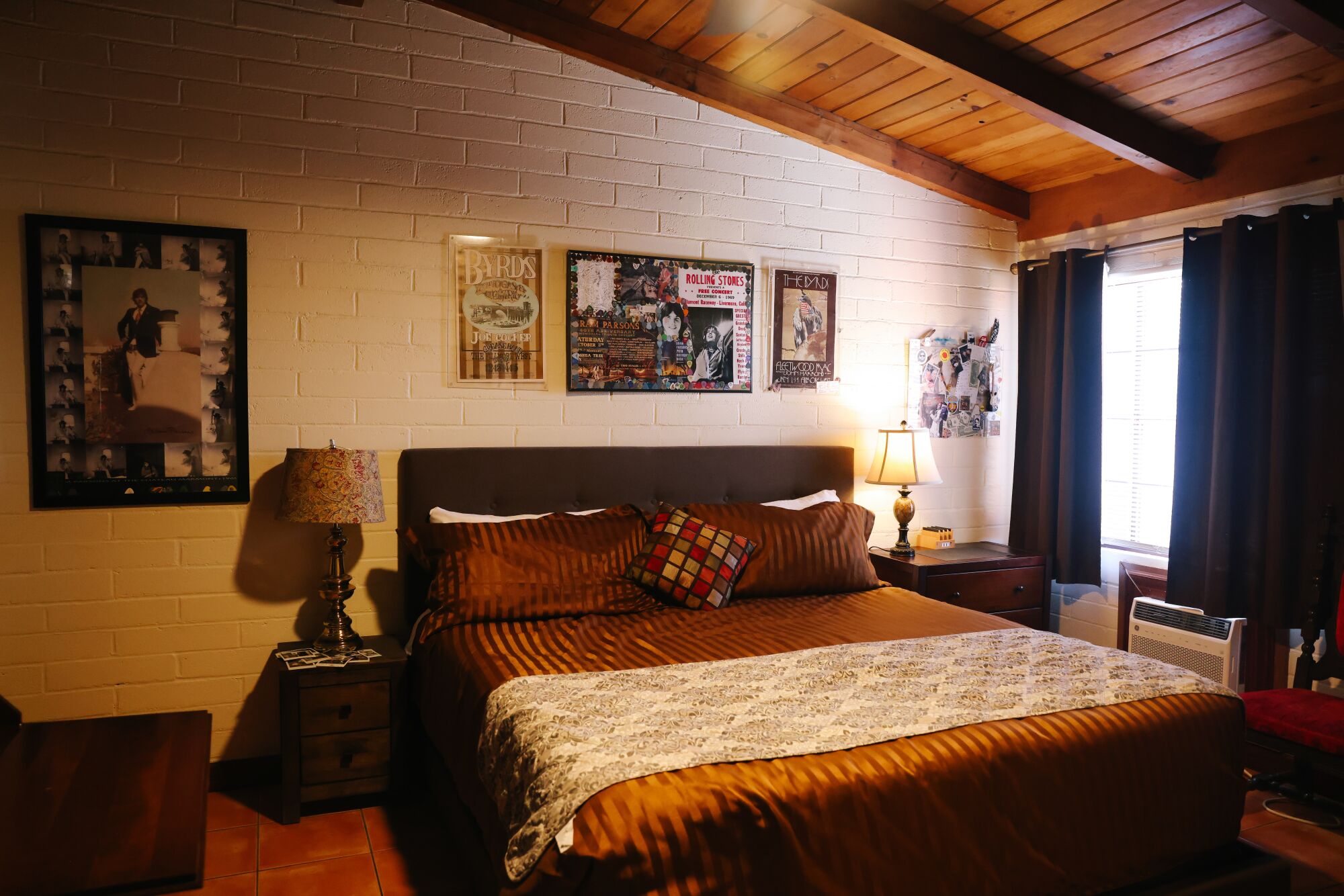
The hotel room where Gram Parsons died in the 1970s.
(Dania Maxwell / Los Angeles Times)
We’ll Sweep Out the Ashes
What entwines Parsons and Joshua Tree is not only his death there but also what followed. His estranged stepfather arranged for Parsons’ body to be flown to Louisiana for burial. But according to friend and tour manager Phil Kaufman, Parsons wanted to be laid to rest in Joshua Tree, and it was up to Kaufman to make good on his friend’s last request.
So in a bizarre scene that seems straight out of a movie — later emulated in the 2003 indie film “Grand Theft Parsons” starring Johnny Knoxville, Michael Shannon and Christina Applegate — Kaufman and a friend borrowed a hearse, drove to LAX and convinced the airline staff that burial plans had changed and that they were there to take the body. From there, they drove to Cap Rock in Joshua Tree, where Kaufman doused the coffin with five gallons of high-test gasoline and lit a match.
“We drove into Joshua Tree and kept driving and driving until finally I said, ‘This is as far as I can go. We’re drunk. We’re going to have to get out of here,’” Kaufman wrote in his autobiography, “Road Mangler Deluxe.” “Later on, people said Cap Rock was Gram’s favorite place and Gram wanted to be buried there. [We only stopped there because] we were too drunk to go any further and it was a large enough place that we could turn around and make our escape.”
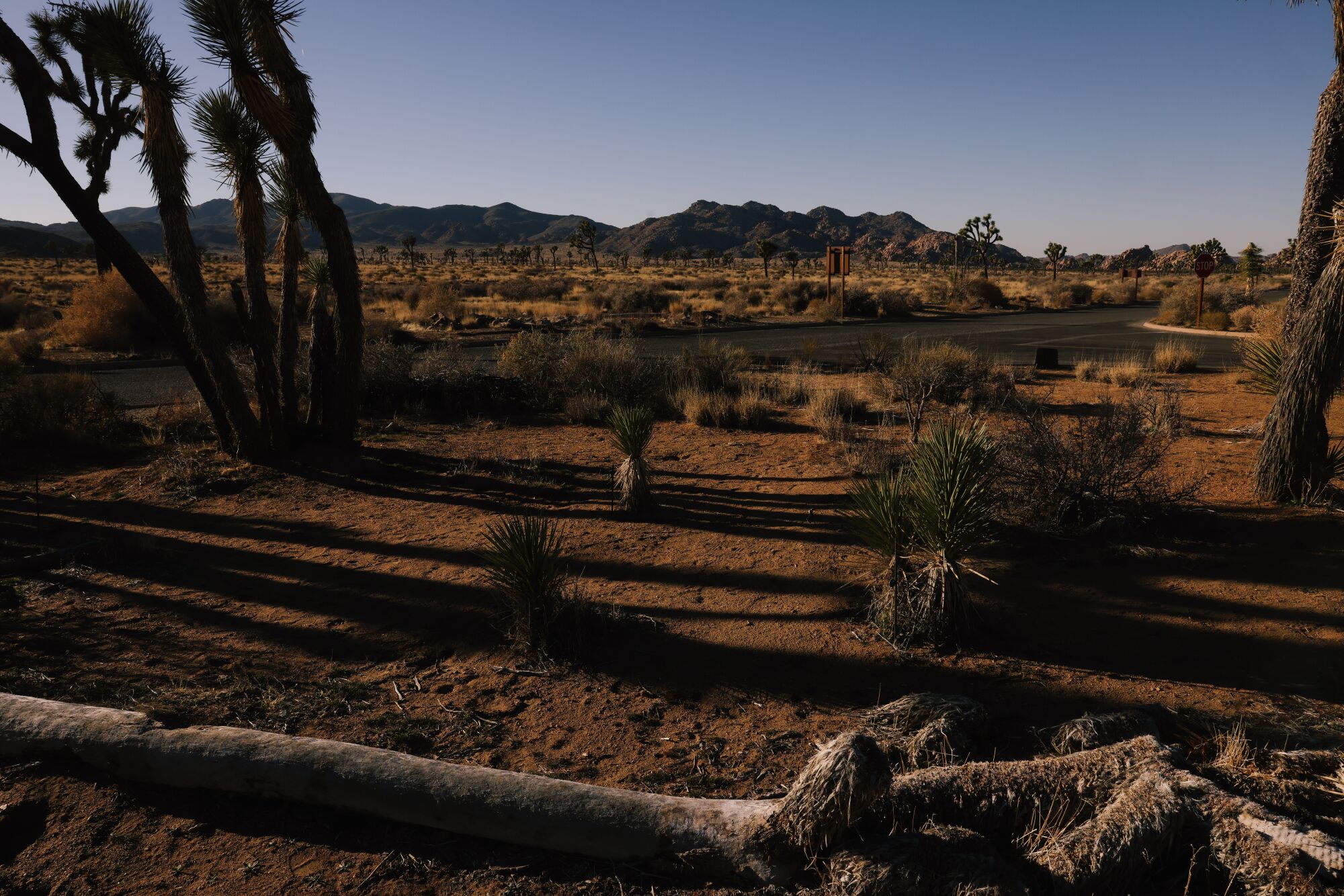
The area where rock star Gram Parsons was cremated at Cap Rock.
(Dania Maxwell / Los Angeles Times)
A horrified maintenance crew found the still-smoldering body the next morning, only partially consumed by the flames. (Kaufman had seen a pair of headlights in the distance and, convinced it was the cops, lit out before the improvised cremation was finished.) Kaufman and accomplice Michael Martin were eventually arrested, but because there was no law at the time against stealing a corpse, they were convicted only of stealing the coffin and fined $300 each. (They also had to pay $708 for the destroyed casket.) Decades later, it remains one of the most bizarre stories in rock ’n’ roll history. (Parsons’ remains were eventually buried in Louisiana.)
The actual cremation spot isn’t publicized by the park, but it’s not difficult to find. According to Kaufman and several rangers, the body was cremated on a median bordering the Cap Rock parking lot. It makes sense, given how drunk Kaufman and Martin were that night; they probably couldn’t haul the heavy coffin to the backside of Cap Rock, where fans frequently erect those makeshift memorials.
Spokesperson Jennie Albrinck said National Park Service officials are discussing a music-related exhibit at Cap Rock that would spotlight Native American bird singers, Parsons and emerging artists performing at music festivals such as Coachella and Stagecoach today. It’s hoped that Parsons’ fans will leave their mementos there rather than deface ancient geological treasures and cultural landmarks. Better yet, park officials want to create a way for people to share their experiences on social media.
“People with an emotional attachment to a place or person sometimes feel the need to leave something of themselves behind,” Albrinck said. “Hopefully, we can find other ways for people to express themselves instead of … taking away from the beauty that inspired Parsons and other musicians.”
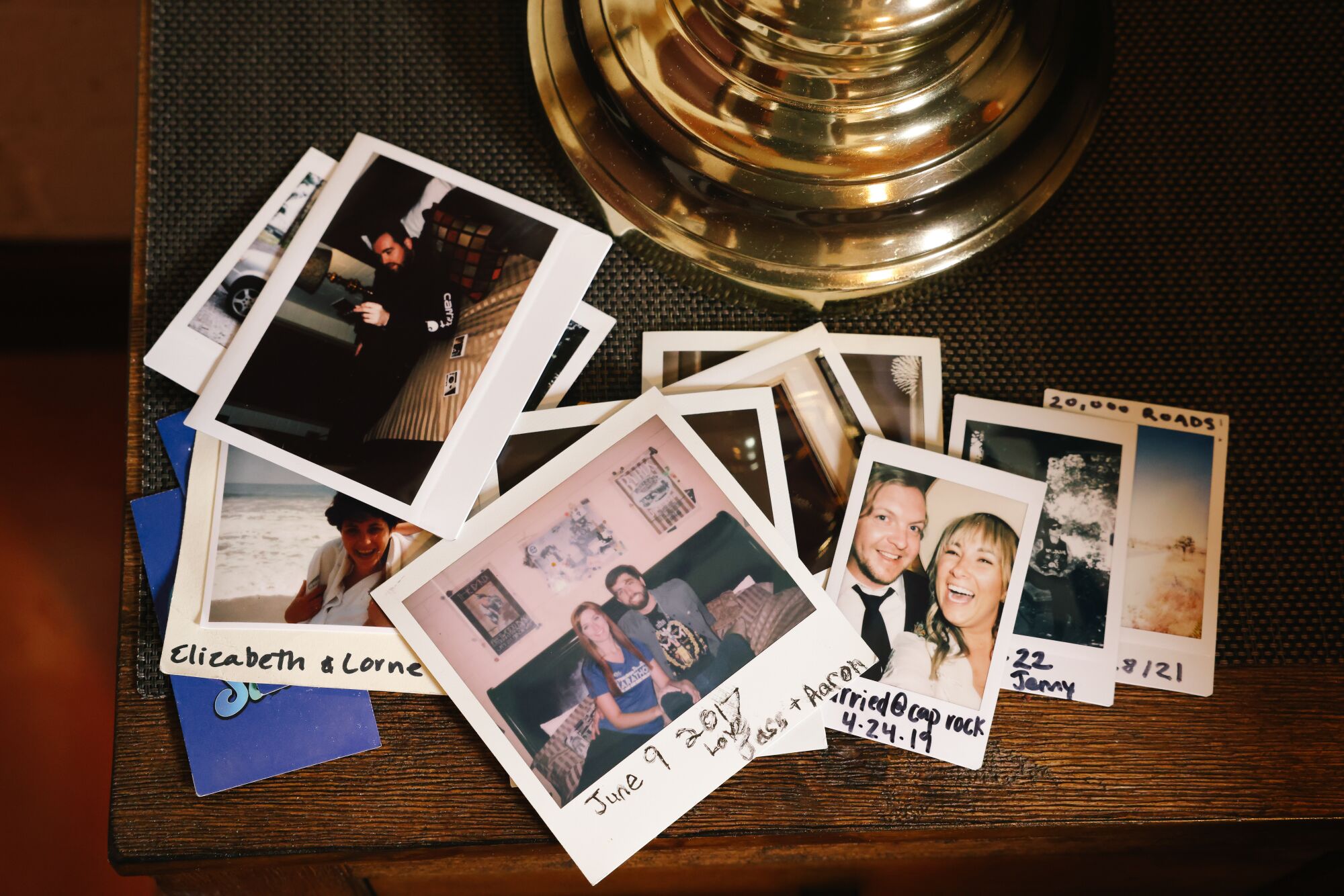
Photos mostly made inside Room 8 by guests hoping to connect with Gram Parsons.
(Dania Maxwell / Los Angeles Times)
Hearts on Fire
While neighboring Twentynine Palms and Yucca Valley have exploded in growth over the last decade or so, the town of Joshua Tree feels in many ways remarkably similar to how it did in Parsons’ day (even if many residents bemoan Joshua Tree seemingly transforming into a collection of Airbnbs rather than an actual community). Visitors will find a handful of gas stations and convenience stores, as well as a bar or two. By contrast, the national park has seen multiple changes, going from a cathedral of natural solitude to the 10th most-visited in the U.S.
The Joshua Tree Inn has changed owners multiple times since Parsons’ death, and it even was a group home for at-risk youth for several years before Margo Paolucci purchased it in 2002. Since then, the motel has gone from wanting nothing to do with Parsons’ death to leaning heavily into it; the inn has become a massive shrine to the singer. Musicians including Grace Potter, Kacey Musgraves and Robert Plant have all stopped by over the years to pay their respects, according to motel manager Cornett. Old concert posters and hand-drawn art of Parsons cover nearly every wall.
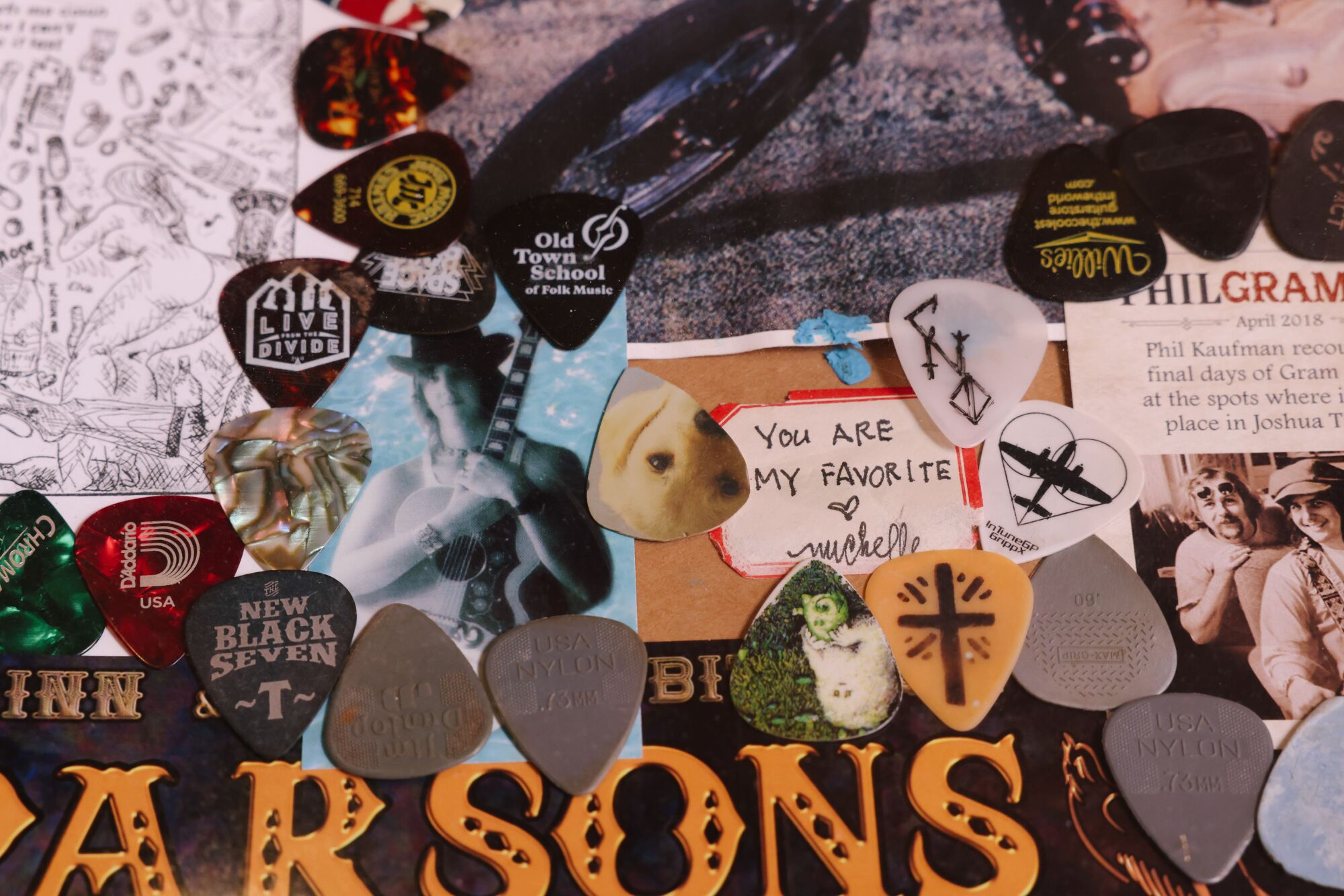
Guitar picks left behind by guests staying in Room 8 at Joshua Tree Inn.
(Dania Maxwell / Los Angeles Times)
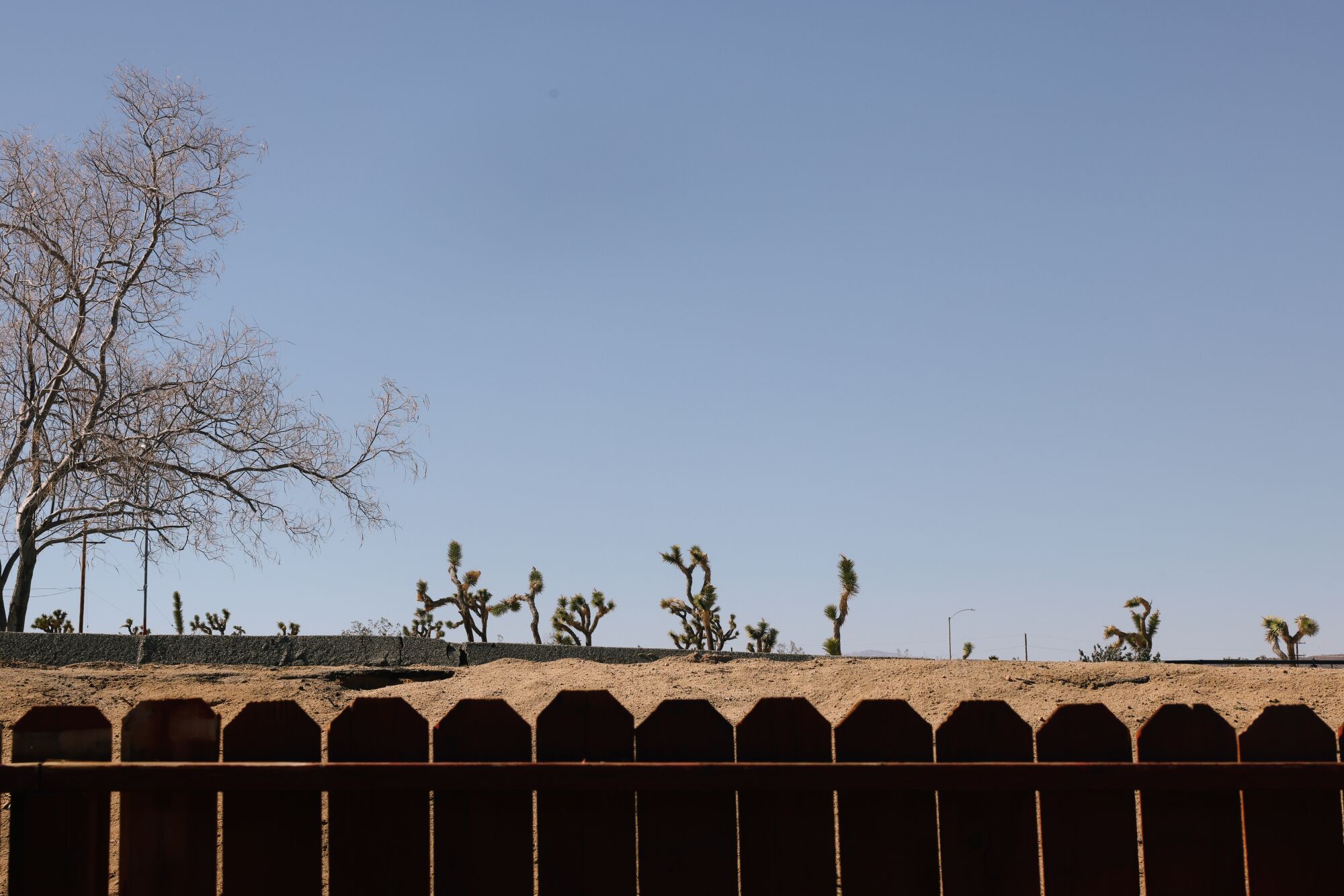
The view from the back patio in the hotel room where rock star Gram Parsons died.
(Dania Maxwell / Los Angeles Times)
For devoted fans, Room 8 is a site akin to Jesus’ alleged crucifixion site on Golgotha. For $198 a night — with a two-night minimum — you can stay within these off-white cinder-block walls, but it’s often booked well in advance.
“We felt a presence there, like he was in the room with us,” said Beth Stallings Odom, who traveled from Georgia with her husband, Gary, just to visit Parsons’ Joshua Tree. She’s not the only one; many guests write in the room diary that they feel a similar, eerie vibe. Even the hosts of the “Ghost Adventures” TV show came out to scrutinize the spectral speculation.
I didn’t sense Parsons’ ghost as I entered the room for my own stay. The room has had more than a few face-lifts since Parsons’ death; the only original piece of furniture is a circular, gold-framed mirror hung opposite the bed.
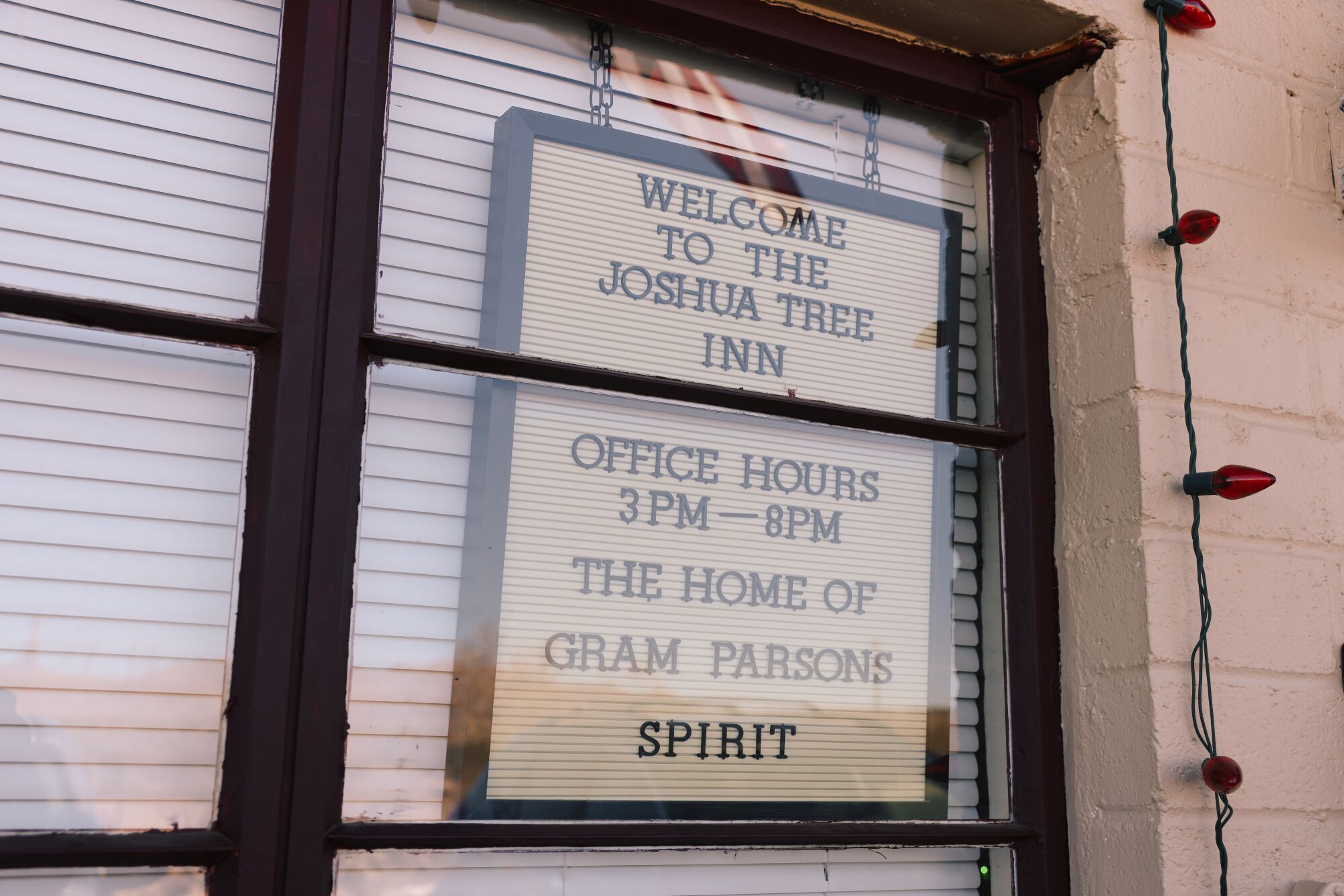
Signage welcomes folks to Joshua Tree Inn, the “home of Gram Parsons’ spirit.”
(Dania Maxwell / Los Angeles Times)
I imagined Parsons checking his reflection before heading out the night of his death. My own is quite a bit different from that of Parsons — older, rounder and more than a bit hairier — and it got me thinking about the possibilities had he lived. Would he have found the success so many of his fans and contemporaries predicted, perhaps becoming an elder statesman of today’s Americana music scene like his former bandmates Harris and Hillman? Or would he have slowly faded out like the closing notes of “The New Soft Shoe,” consigned to a long life of obscurity? We’ll never know.
The inn has a couple of acoustic guitars that guests can take back to their rooms to play, but if the mediums are right and Parsons’ ghost still inhabits No. 8, I didn’t want to further punish him with my brutal take on “Brass Buttons.”
I’d like to think that if Parsons’ spirit remains earthbound, he wouldn’t be trapped in a motel; instead, he’d be in the park, surrounded by the landscape he loved so much.
Camping just a few miles from Cap Rock, I sat by a roaring fire — no five gallons of high-test gas needed — a kaleidoscope of purples fading to black in the sky. Serenaded by lovelorn crickets and an occasional bird call, I strained my ears. For a brief moment, I imagined a faint echo of “In My Hour of Darkness” whispered in a familiar Georgia baritone among the trees.
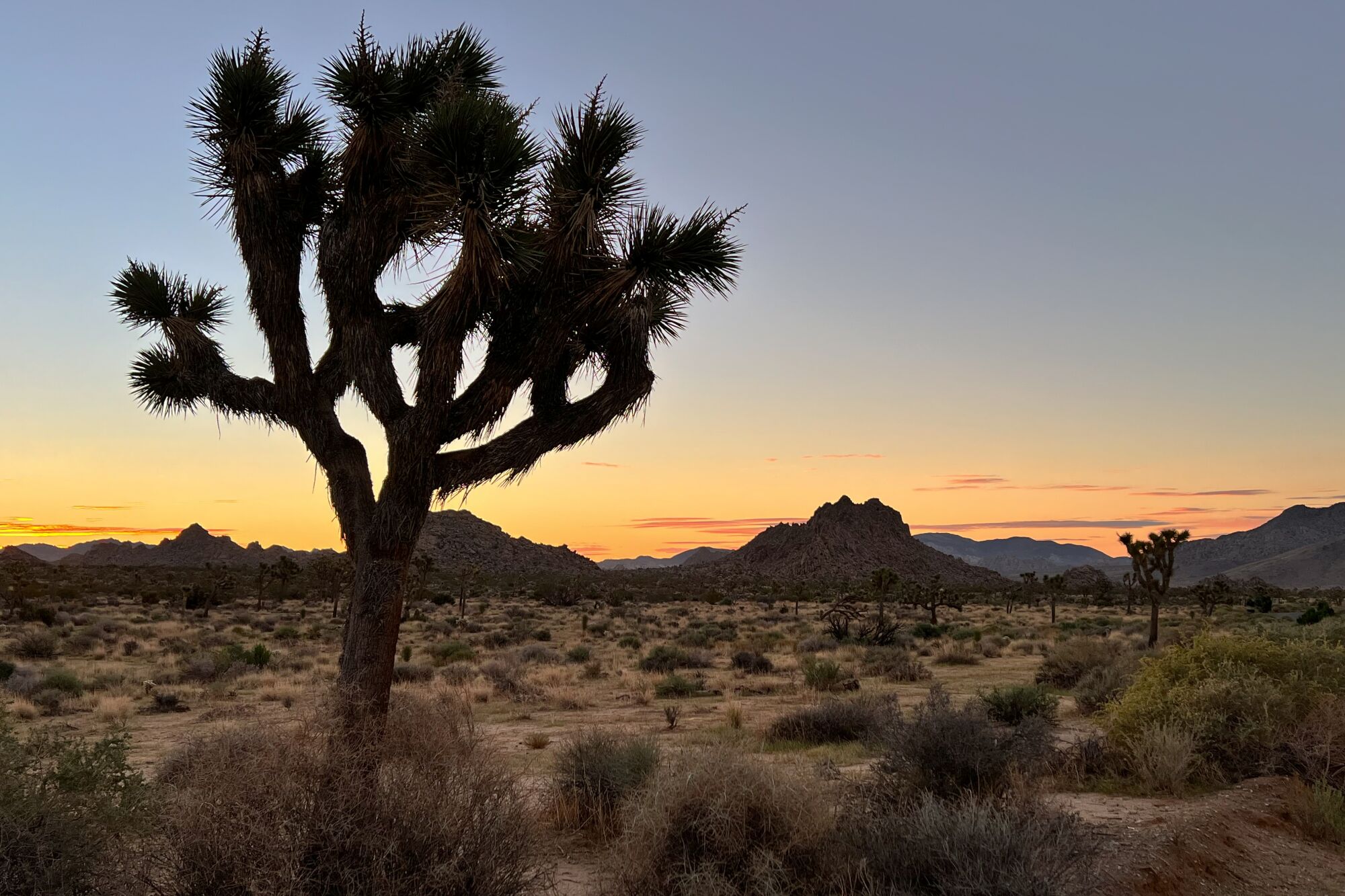
Joshua Tree National Park at sunset.
(Robert Annis)
Stay connected with us on social media platform for instant update click here to join our Twitter, & Facebook
We are now on Telegram. Click here to join our channel (@TechiUpdate) and stay updated with the latest Technology headlines.
For all the latest Travel News Click Here



